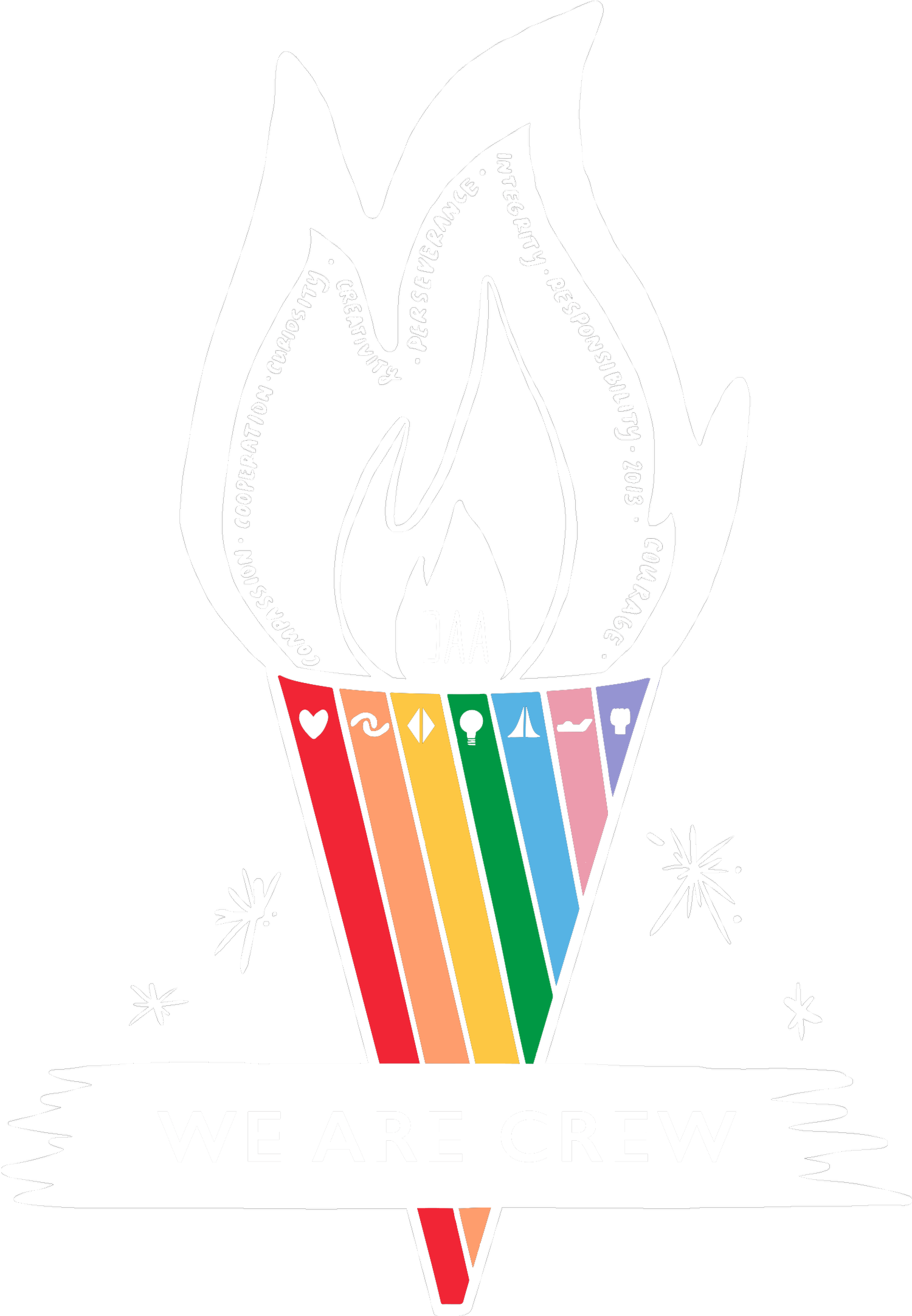Restorative Practices: Responding to Off-Culture Behaviors
Creating a strong culture in which every member of our crew embodies the habits of character is an ultimate goal for our school. What do we do when a member of our crew isn’t using the habits of character? What do we do when a member of our crew is causing harm?
Our responses to these off-culture behaviors are grounded in restorative practices. Our aim is to respond to the off-culture behaviors in a way that builds community, fixes the harm that was done, helps students learn from their mistakes and empower students with the skills to resolve conflicts.
Daily Crew and Community Building
Every morning and afternoon we circle up. This is part of our intentional community building.
Our morning crew starts with a greeting, followed by a share, and lastly an initiative.
The greeting is a way to say good morning to the crew. This could be a one minute greeting-- where each member of the crew greets each other with a handshake, a high five or a hug for one.
Next up would be a share. Often times shares are grounded in our habits of character [link to blog post outlining the habits of character]. We will turn and talk or share out to the whole group about certain topics.
Lastly is the initiative. Initiatives are team games designed to create teachable moments surrounding our habits of character.
In the afternoon, we circle back up for announcements and appreciations.
The idea behind these circles are intentionally building community and teaching social-emotional skills. This is preventative work and is truly a foundation of our school.
Harm Was Done: Now What?
Inevitably students will have some actions that are not aligned with our culture. Members of our crew will hurt other members. Harm will be done. So, how do we respond when harm is done?
Restorative Conference
When students have conflict we bring them together to fix the harm that has been done.
A series of questions are asked, for example:
For offenders:
What happened?
What were you thinking at the time?
What have you thought about since?
Who was affected by your actions?
How have they been affected?
What can you do to make things right?
How can we make sure this doesn’t happen again?
For Victims:
What did you think when you realized what happened?
How has this affected you and others?
What has been the hardest thing for you?
What should happen to make things right?
How can we make sure this doesn’t happen again?
Guiding the students through this restorative practice allows them to be a part of the solution, feel heard and take ownership over the school culture.
Peace Path
Another avenue to empower students is a peace path. This is a process that can be taught to students. After a few rounds of the peace path students should be able to walk the path by themselves!
The path goes as follows:
Student A: I feel _________ when you _________ .
Student B: I know you feel _________ when I _________ .
Student B: I feel _________ when you _________ .
Student A: I know you feel _________ when I _________ .
Student A: Next time, I need _________ .
Student B: Next time, I agree to _________ .
Student B: Next time, I need _________ .
Student A: Next time I agree to _________ .
Student A and Student B agree on a handshake, high-five or hug.
Giving students this framework empowers them to solve issues other members of the crew.
Circles
Restorative circles allow students to speak freely and openly while working towards resolving a problem.
A circle views of-culture behavior as a teachable moment, separates person from the deed, focuses on fixing the harm done, encourages authentic participation and allows for successful reintegration.
A few elements I find are common in highly successful circles are:
-
Use of a talking piece to allow for equal voice
-
Speak from the heart
-
Listen from the heart
-
No need to practice or rehearse
-
Without being rushed, just say enough
-
Work is ongoing, things won’t be fixed after one circle
Restorative practices take more time and effort than more traditional discipline models. The reason they are worth the extra time and effort are because they create students who are empowered by being a part of the process, enable crew members to restore and build community.
